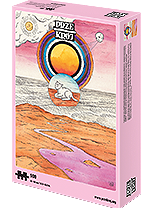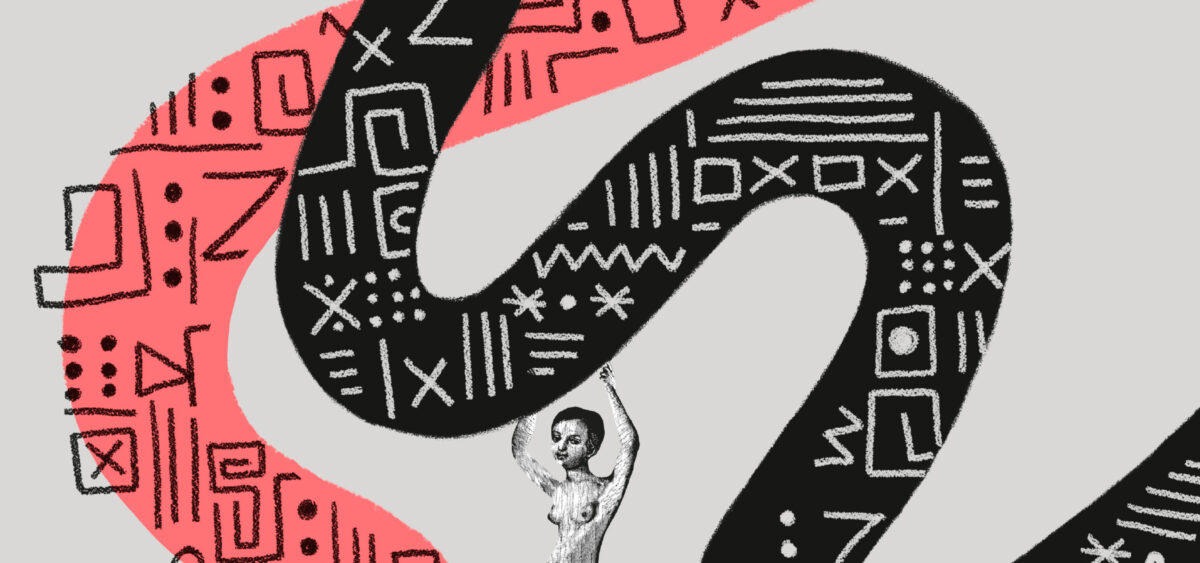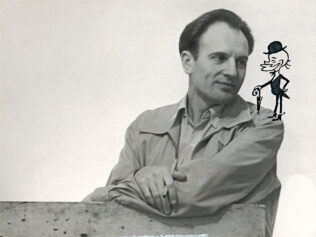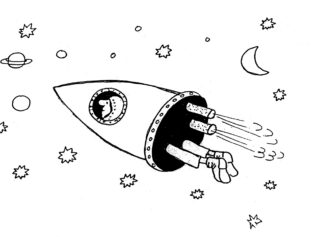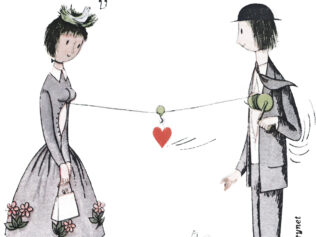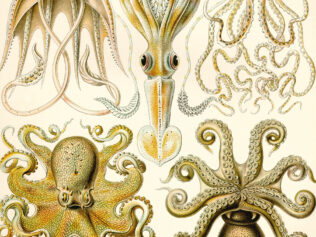
On 7th February, regular “Przekrój” illustrator Joanna Grochocka will receive a prize from the Society of Illustrators for her art in the book “Not So Made-Up Stories” (“Historie nie do końca zmyślone”), written by Tomasz Wiśniewski. She will be awarded a silver medal in the Book category of the Illustrators 62 Annual Competition.
Przekrój: We can observe a gigantic trend towards the return of illustrations in books. Why do you think that is?
Joanna Grochocka: As you know, Polish illustrations and graphics already had their glory days. Back in the 1960s and 70s they were well-known and hailed across the world as fresh, lively and imaginative. Unfortunately, during the period of political transition, we were dealing with an invasion of the worst sort of aesthetic quality, riding the wave of fascination with capitalism and all that came ‘from the West’. In stark contrast to the so-called greyness of the old world (and that is how the old order was perceived), what was desirable was anything different or colourful and which couldn’t be associated with komuna (a pejorative term for communism). Looking back from today’s perspective, there was an influx of almost psychedelically ugly, Disney-esque ‘nightmares’, and graphics full of effects and fireworks from Microsoft Paint.
Fortunately, the 2000s saw a gradual reversal of this trend – finally signs of the return of good visual traditions appeared; simplicity, form and craftsmanship began to be appreciated once again. And in around 2010, in fact a real boom in illustration appeared; at last the print media welcomed it again. There was a flurry of beautiful books for children – reprints of old classics like Butenko (the late Bohdan Butenko, Polish cartoonist 1931–2019) and Stanny (Janusz Stanny, 1932–2014), but also new works, created by young artists; fresh blood. Illustration was definitely back in fashion. As in other fields, once the fascination with mass-produced, cheap, plastic products, easy to get and easy to consume, had passed, the world once again began to value the opposite: the individual approach to a subject, quality, and good craftsmanship. That, at least, is what I would like to believe.
What techniques do you use?
I draw or paint. I collect nice or intriguing-looking bits of paper. I glue or work on a computer. It just depends on the specific task, the theme and the time I have available. I often mix techniques: I paint and scan, and then I develop it on the computer in order to be able to change it easily and quickly – for example, the colours, where flexibility and the need for fast changes are required. Sometimes, however, hand-crafted work is the final look. Much depends upon the mood and nature of the particular subject; whether, in my opinion, it demands strictly ‘paper’ work, or whether it allows for a mix, and maybe the roughness and liveliness of a collage will work well? I permit myself freedom in the choice of techniques, thanks to which my work always gives me pleasure and allows space for a fresh perspective.
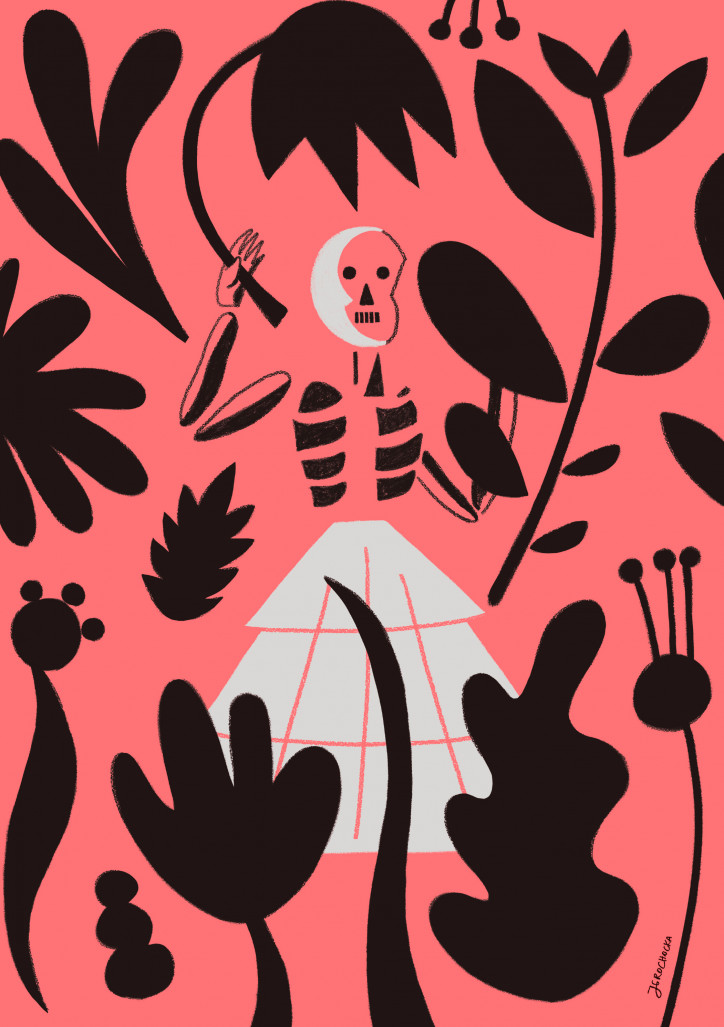
How did you search for your style and in what direction are you headed?
I guess I am not going to be original here. Like almost everyone in our country, I was brought up on the Polish School of Posters and Illustrations. From childhood I was surrounded by books illustrated by Butenko, Witeź, Stanny and Siemaszko. I enjoyed the imaginative posters of Młodożeńiec and Tomaszewski. Meanwhile, at home, I devoured books of paintings; by Picasso, Mondrian and Klee. I think this taught me to understand the abstract and gave me a love of playing with form. As a child, I also adored Chagall; I pored over his paintings as if I was reading a fairy-tale. I was always drawn more to things unspoken, simple in form, but secretive; things that stimulate the viewer’s imagination. Therefore, I was never keen on technical feats or complex, naturalistic narratives. Later I spent a long time in the grungy aesthetics of punk zines. I was deeply into serigraphy and street art. I miss that and I think I’ll go back to that space, because it has a strength, authenticity and selflessness that classic illustration (although I love it very much) doesn’t quite have. Illustration is always wrapped up with its context and business, and is simply functional. I would like to make works that I want to look at myself; work that I value myself. And I value simplicity, lightness and energy; and also, freedom of imagination and not having to worry about so-called ‘reality’. As Franciszka Themerson once said: “Within a picture the laws of gravity do not apply.” And why should they?
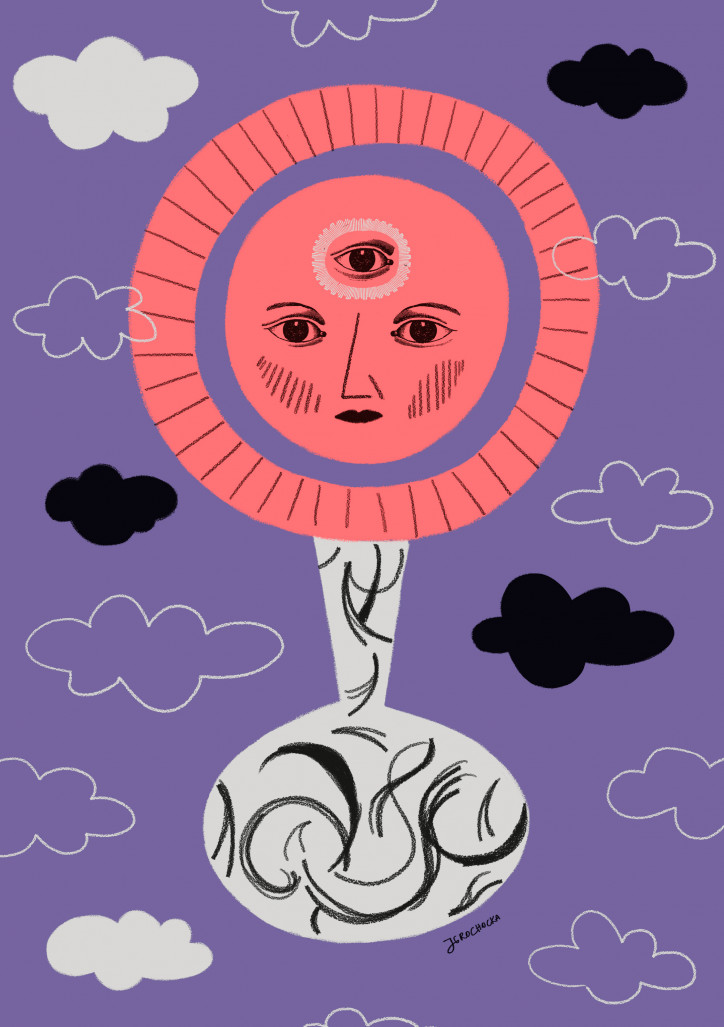
You have worked a lot with your partner, the writer Tomasz Wiśniewski. What’s that like? Do you write and create together sometimes, or completely separately?
Yes, we work together quite a lot. From the start of our friendship it was somehow obvious, and we simply surrendered to this historical necessity. We have very similar sensitivities, tastes and outlook on the world, which makes things much easier. However, as everybody knows, being a couple and working together can often be stormy. But I really like storms.
If we’re talking in practical terms, usually it looks quite typical from the outside: Tomek writes and I read the text as he produces it. We discuss it and then I go around with the theme in my mind until it seeds itself visually. I show my ideas to Tomek and get down to work. But every day, of course, our artistic flows go unnoticed and are happening subconsciously all the time. Some time ago we had the idea for a book which would be created the other way around: first would be the drawings (or collages, or mixes – the pictures) and they would be the base from which the stories would be written.
Physically, we normally work separately. This is down to the character of our work, which requires a fair amount of solitude and concentration. I think that this is also sensible mental hygiene.
Of course, we both also have our own projects that we work on by ourselves.
What makes the perfect illustrator?
I don’t know what the official definition would be. For me, the first condition is the combination of the intellectual and the ‘artistic’ tools; one has to understand the texts on different levels and be able to work with the book/article/subject on a deep level. And also, one must be able to just enjoy reading; to assimilate and transform the text within oneself. The second thing is the ability to translate the spoken language into a visual one. And this can be tricky. If the illustration is meant to enrich and be of value in its own right, and not just a substitute for a photograph, it requires lightness of thought, the ability to work with symbols and, of course, great artistic skill; the individual, original language of the illustrator, which we recognize through his/her specific take on, and transformation of, the subject.
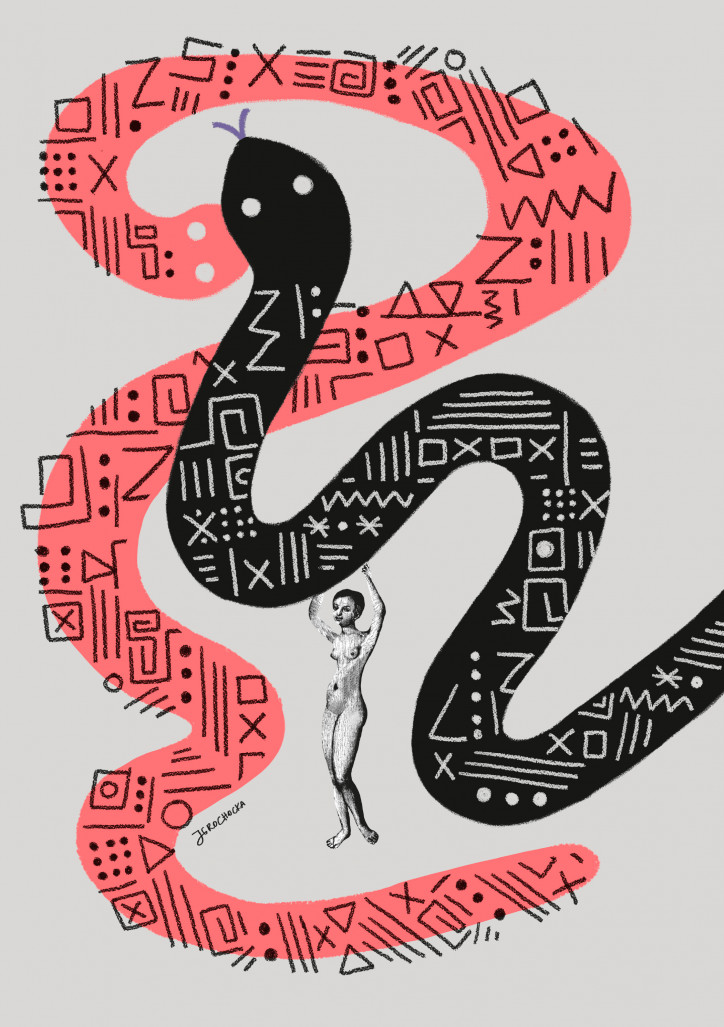
Where do you find your inspiration?
I always have a problem with this question, because the basic answer is banal and silly to share: from everything. But to be more precise, I have been inspired by books since I was a child (wow! Isn’t that amazing?), and it’s still the same today, although it happens on different levels. In the past I was more inspired by stories, secrets and the details of the way people dressed and their habits. Today I’m more interested in the absurd; getting away from worn ways of thinking and logic, because that refreshes the tired, everyday matters of the mind and fires up the potential of the imagination, which often dozes off when we strive too much for ‘healthy common sense’. I am also inspired by lying down and looking at the ceiling, and by silence. I love listening to children’s conversations. But if I think hard about it, often ideas come to me from nowhere. That’s why it’s good to allow oneself the time and space for this mental nothingness. Don’t give in to the tyranny of always being on the go.
What does this prize mean to you?
It seems to me that receiving this award means that my art is communicative and works quite well, not only within our narrow cultural sphere. To be chosen from among the enormous number of illustrators worldwide is very moving and uplifting, particularly since the works I create are not exactly from the visual mainstream. It is good to know that the energy I put into my creativity flows and returns. We all know that the honours of this world are quite fleeting and that it is better not to get attached to them. But I am enjoying the moment!
Parts of this interview have been edited and condensed for clarity and brevity.
“Not So Made-Up Stories” (“Historie nie do końca zmyślone”), written by Tomasz Wiśniewski and illustrated by Joanna Grochocka, is the first book published by the PRZEKRÓJ Foundation. You can read an excerpt from the book here.
If you would like to see more of Joanna’s illustrations, click here.
Translated from the Polish by Annie Krasińska

